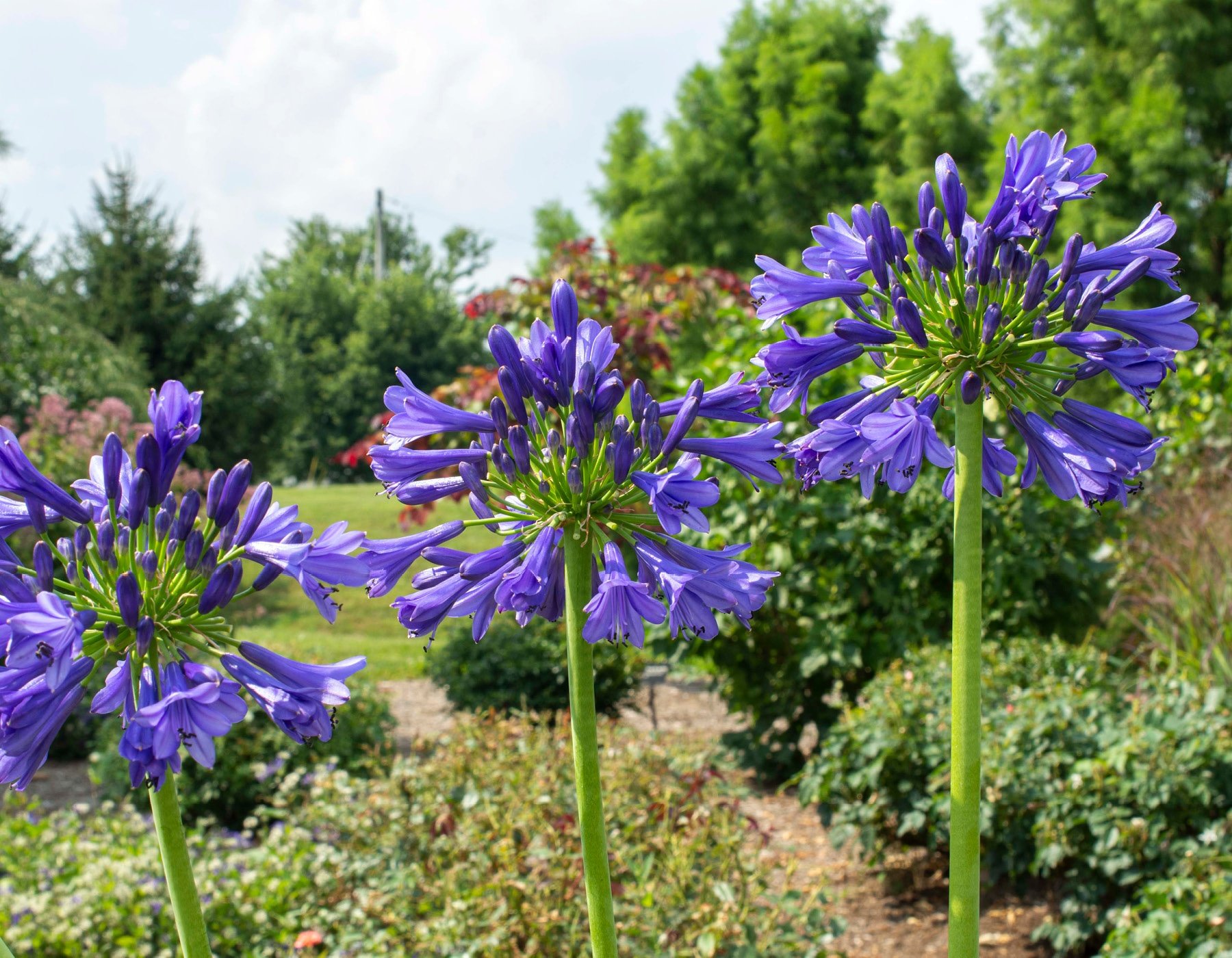Growing Agapanthus: A Full Overview to Beautiful Blooms
Growing Agapanthus: A Full Overview to Beautiful Blooms
Blog Article
Understanding the Art of Agapanthus Treatment: Vital Steps for Healthy And Balanced Growth and Dynamic Flowers
In the realm of cultivation, the growing of agapanthus stands as a satisfying undertaking for those that seek to nurture these classy flowering plants. With their striking blooms and graceful foliage, agapanthus has recorded the attention of garden enthusiasts worldwide. Nonetheless, accomplishing optimum growth and lively blooms calls for a nuanced approach that encompasses various important steps. From choosing the right selection to grasping trimming techniques, the journey towards growing growing agapanthus plants is complex and holds the vital to unlocking the complete capacity of these organic gems.

Choosing the Right Agapanthus Selection

When selecting the ideal Agapanthus selection for your yard, consider aspects such as climate viability, flower shade, and development behavior. Agapanthus, generally referred to as Lily of the Nile or African lily, comes in a variety of shades varying from shades of purple and blue to white. Select a blossom color that complements your existing garden palette to produce an unified landscape. Furthermore, think about the environment in your area to ensure the Agapanthus selection you pick can flourish in your particular problems. Some selections are extra tolerant of cool temperatures, while others choose warmer climates. Recognizing the growth habit of different Agapanthus ranges is important for appropriate positioning within your garden. Some ranges have a clumping growth habit, perfect for borders or containers, while others have an even more dispersing nature, ideal for ground cover or mass plantings. By carefully assessing these aspects, you can select the ideal Agapanthus variety to boost the appeal of your yard.
Perfect Planting Problems
Considering the optimum ecological demands is crucial for successful Agapanthus growing. Agapanthus plants are sensitive to cool temperatures and need to be shielded from frost during winter months.
To ensure healthy and balanced development and vivid blooms, plant Agapanthus light bulbs at a depth of regarding 2-4 inches and room them 8-12 inches apart. Adding raw material, such as garden compost, to the soil can improve water drainage and fertility, promoting robust origin advancement. Mulching around the base of the plants helps retain moisture and reduces weed development. Routine watering is crucial, especially throughout the expanding period, to maintain the dirt regularly damp but not saturated.
Watering and Fertilizing Tips
Keeping proper wetness degrees and supplying important nutrients are key aspects in the treatment regimen for Agapanthus plants. When it comes to watering Agapanthus, it is essential to strike a balance. These plants prefer consistently moist dirt however are vulnerable to root rot if overwatered.
Fertilizing Agapanthus is crucial for promoting healthy and balanced development and respected flowers. Use a well balanced plant food, such as a 10-10-10 formula, in the very early springtime as new development emerges. By adhering to these watering and feeding pointers, you can guarantee your Agapanthus plants grow and create dynamic, lasting blossoms.
Trimming Methods for Agapanthus
Pruning Agapanthus plants at the proper times and with appropriate strategies is crucial for maintaining their health and promoting optimal development and blooming. The suitable time to trim Agapanthus is in late winter or early spring prior to new development arises.
For flowered stems, wait till the blossoms have actually withered and afterwards cut them back to the base. This not just cleans the plant's appearance but likewise urges the advancement of new blossom buds. Deadheading invested flowers can also reroute the plant's energy right into producing even more blooms instead of establishing seeds. However, if you wish to accumulate seeds for propagation, leave some flowers to completely dry and mature on the plant.
Keep in mind to make use of tidy, sharp tools to make accurate cuts and reduce the threat of introducing illness. Agapanthus. Regular pruning will aid keep your Agapanthus looking cool and healthy and balanced while guaranteeing a bountiful display screen of gorgeous blooms
Dealing With Common Pests and Conditions
After making sure correct trimming methods for Agapanthus, it is important to attend to usual bugs and conditions that can affect the health and wellness and vitality of these plants. Agapanthus plants are normally sturdy yet can still succumb to specific problems. One typical insect that influences Agapanthus is the Agapanthus gall midget. This tiny, orange fly lays its eggs in the vegetation, causing altered growth see this page and blossom buds that fall short to open. To fight this pest, trim and destroy any kind of damaged plant parts and consider utilizing insecticidal soap.
Furthermore, Agapanthus plants dig this can endure from root rot if they are grown in badly draining pipes dirt. By being watchful and taking punctual action versus illness and parasites, you can aid your Agapanthus plants thrive and create dynamic blossoms. Agapanthus.

Final Thought
To conclude, mastering the art of agapanthus care involves picking the appropriate variety, supplying ideal growing problems, proper watering and feeding, appropriate trimming methods, and attending to typical bugs and conditions. By complying with these essential actions, you can ensure healthy and balanced development and vibrant blossoms for your agapanthus plants. Bear in mind to consistently keep track of and keep your plants to advertise their general well-being and long life.
To make certain healthy and balanced growth and vibrant blossoms, plant Agapanthus bulbs at a deepness of regarding 2-4 inches and room them 8-12 inches apart. By adhering to these watering and fertilizing suggestions, you can guarantee your Agapanthus plants thrive and create lively, durable blooms.
One common bug that affects Agapanthus is the Agapanthus gall midget. In addition, Agapanthus plants can suffer from root their explanation rot if they are planted in improperly draining pipes soil. By following these necessary actions, you can guarantee healthy development and lively blooms for your agapanthus plants.
Report this page